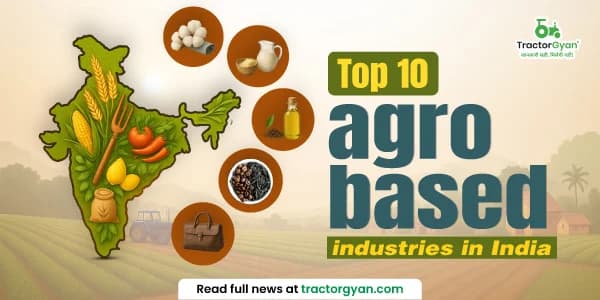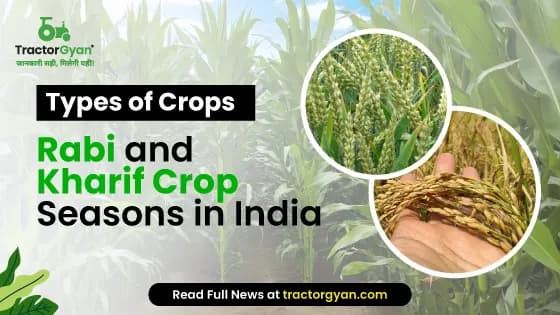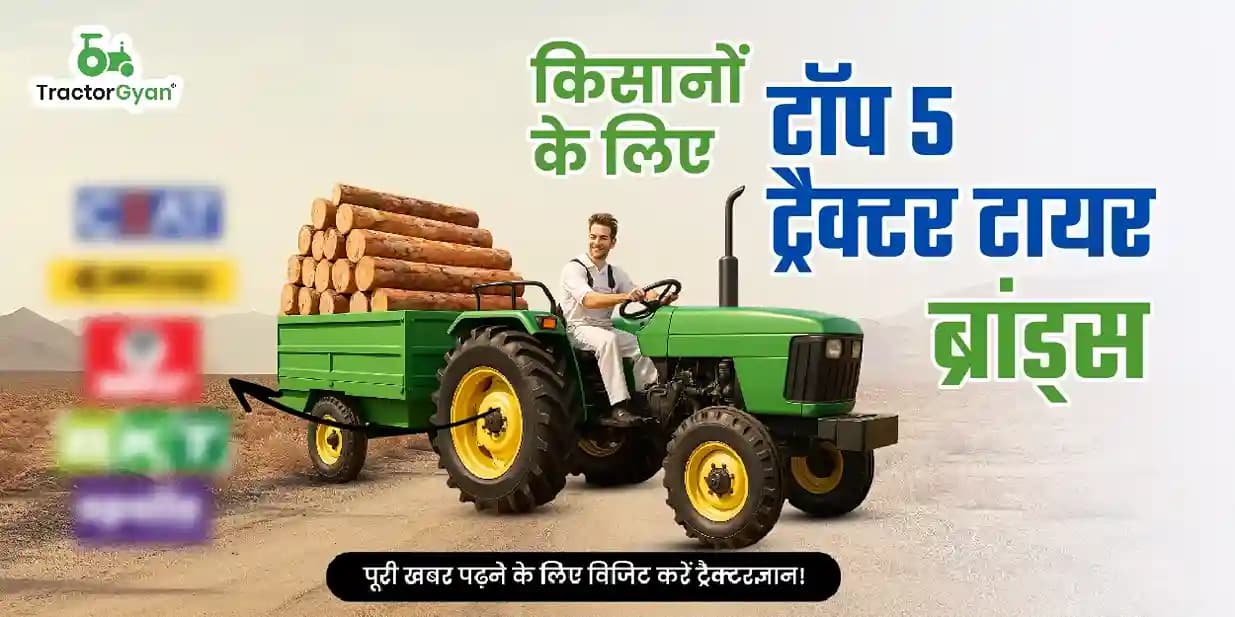What is Floriculture? Different Types and Ideal Conditions for Floriculture in India
टेबल ऑफ कंटेंट
When it comes to farming, it’s hard to beat India. Whether it’s the production of crops or flowers, this land of agriculture is performing better than the rest of the world. If we talk about India's performance in floriculture, and farming of flowers, India produced over 3 million metric yields in fiscal year 2022. The total revenue generated was INR 231.7 Billion in 2022 and this figure is expected to touch the mark of INR 460.6 Billion by 2028.
The future of floriculture in India is bright and farmers can give it a try. Before you plan to start commercial floriculture as your main or additional source of income, you must understand what it is all about and which types of floriculture are suitable for you.
In this blog, we came up with this and many other floriculture information like floriculture meaning, floriculture examples, ideal conditions, government schemes, and so on in a crisp manner. So, check it out before actually making a move.
What is Floriculture? - Definition & Meaning
In layman’s language, floriculture is the cultivation and sale of flowers. Farmers involved in commercial floriculture farming often look after the production, processing, and marketing of flowers. It comes under horticulture, which is mainly related to the cultivation of fruits, plants, flowers, spices, and vegetables.
Depending upon the farmers’ interest, floriculture can be performed simply as the production of flowers, selling them as potted plants, or taking care of decorative arrangements with flowers.
In recent years, the floriculture industry has gained immense popularity because of its great aesthetic appeal and commercial significance. The scope of floriculture in India and across the world is great, which the above-mentioned statistics have made very clear.
Different Types of Floriculture Practiced in India

Just like any other type of farming, floriculture is also a highly diverse practice. Farmers can engage in various kinds of floriculture. Here is an overview of different types of floriculture that are performed in India.
1. Cut Flowers
The cut flowers are long-lasting flowers that are plucked with the stalk, specifically for vase arrangements. These make up a sizable portion of the global trade in floricultural goods. Rose, carnation, chrysanthemum, orchid, gerbera, Lilium, anthurium, gladiolus, narcissus, bird of paradise, heliconia, anemone, ranunculus, and tulip are significant examples of cut flower crops.
2. Loose Flowers
In addition to cut flowers, India also excels in the production of loose flowers. Mainly, loose flowers are used for religious purposes. People use them during ceremonies at home and in temples. Loose flowers are used in great quantities for decorations in marriages and temples. Jasmine, marigold, and lotus are among the prominent loose flowers cultivated in the country. The flowers play a vital role in various cultural and religious practices, making them an essential part of Indian floriculture.
3. Cut Greens
Cut greens or cut foliage (leaves and stems) are long-lasting and in high demand. They are appealing in form, color, and freshness. Along with cut flowers, these are used as fillers in floral arrangements and elsewhere to add aesthetic value. These flower products can also be used to create other lovely fresh floral designs and arrangements, such as bouquets, wreaths, and home interior decorations.
4. Perfumes
The demand for natural floral extracts, such as flower-derived perfumes, is rising daily. Some flowers, including rose, jasmine, screw pine (kewra), and tuberose, are used to extract essential oils that are then utilized to make attar or perfumes.
5. Nursery
Setting up a plant and flower nursery is also a growing floriculture business in India. Nurseries sell potted plants to the people for home and garden decoration purposes. Providing different types of plants and planting material, such as nursery seedlings or prepared plants of trees, shrubs, climbers, annual and perennial plants, foliage plants, bulbous plants, cacti and succulents, palms, indoor plants, grasses, seeds, bulbs, etc is a lucrative retail or wholesale business for ornamental plant nurseries.
6. Dried Flowers
The dry flower technique makes it simple to dry, conserve, and treat flowers while keeping their aesthetic appeal and timeless quality. The dahlia, larkspur, paper flower, annual chrysanthemum, marigold, strawflower, lotus pods, and other flowers can be air-dried and used as dry flowers.
What are the Ideal Conditions for Floriculture?

While floriculture farming is an ideal business and can be started with low investment, it will only flourish when it’s done with due diligence and under suitable climatic conditions. A high-yield floriculture demands:
-
Moderate temperature- Flowers need an optimal daytime temperature of 8°C to 28°C. During nighttime, they need a cooler environment. Regions of extreme heat are not suitable for most flower varieties. However, certain flowering plants like orchids, hibiscus, and anthuriums, prefer warm temperatures between 25°C to 35°C.
-
Moderate rainfall- Average rainfall of 1000-1500 mm is ideal for the growth of flowers and plants. Excessive rainfall clogs the plant's roots and leads to multiple diseases.
-
Optimal sunlight- A location with 6-8 hours of direct sunlight per day is generally suitable.
-
Well-Drained Soil- Loamy or sandy loam soils with good organic matter content are perfect for floriculture.
Considering all these factors and the National Horticultural Database, Tamil Nadu, Karnataka, Andhra Pradesh, West Bengal, Maharashtra, Madhya Pradesh, Gujarat, and Haryana are the leading flower-producing states. Let’s break down the operations of each state in the floriculture industry.
Importance of Floriculture in India
Floriculture is a rapidly growing practice across the world, as the cultivation of flowers holds significant importance in many industries and sectors, and general uses. Flowers offer an aesthetic appeal to our surroundings with their colour, aroma, and beauty. Flowers are also economically important as they are used in various industries and make farmers grow more flowers for production, marketing, and exports.
Flowers also contribute to social and cultural requirements in weddings, occasions, funerals, festivals, and so on. They are even beneficial from a health point of view, as they contribute to aromatherapy and herbal medicines. The growing trend of flower and botanical gardens attracts tourists and promotes recreational activities. It helps farmers with an option to cultivate new things besides fruits and vegetables, which helps them earn more revenue, as flowers give more returns per unit area compared to other vegetable crops.
If we talk from the employment perspective, floriculture also generates more employment as it requires labour for various stages such as cultivation, harvesting, packaging, marketing and so on. In addition to this, floriculture allows cultivation around the year, suitable for season and off-season cultivation. Flowers such as fresh flowers, cut flowers and ornamental plants have great significance in the international market and can be exported, ensuring farmers with foreign exchange output.
Real value facts for floriculture cultivation
-
A single spike of gladiolus and gerbera flower can sell for up to Rs. 3-5 in kharif and 5-10 in rabi seasons.
-
Globally, the ornamental crop industry is worth about US$ 70 billion (isn’t it a whopping amount).
-
The consumption of flowers around the globe goes to US$ 35 billion.
Status of Indian Floriculture Industry
The Indian floriculture industry makes the economy of India bloom out loud. The northern and southern parts of the country India are rich in natural resources like plants, fresh flowers, and their seeds, and well equipped with pollination activities which adds to the process of reproduction and invention of new flowers and types.
In addition to flowers, which are the primary crop, modern floricultural crops also produce value-added goods that are exclusive and likely to face less competition on the global market under a WTO scenario. These products include essential oils of rose, tuberose, jasmine, tiger lily, and various plant extracts that are widely used in pharmaceuticals and medicine.
Floriculture enterprises produce fresh and dried flowers and leaves for a variety of markets, including wholesale flower markets, florists, retail outlets, and in certain cases for export. There is a large market for both floriculture and horticulture. The future of industrial floriculture is very promising. The scope of commercial floriculture is significantly influenced by several different factors, including soil, environment, labor, transportation, and demand.
The many revenue-generating activities in the floriculture business include the production of cut flowers, loose flowers, dry flowers, nurseries, potted plants, the seed industry, the extraction of essential oils, and value-added goods.
Seasonal flower and seed production is a well-established industry in Punjab, Karnataka, and Maharashtra. Several seed businesses have established manufacturing units in key flower-growing States to supply the demand for flower seeds.
Six agri-export zones for floriculture have been established by the Indian government in Maharashtra, Sikkim, Tamil Nadu (two zones), Uttarakhand, and Karnataka.
How to Start a Commercial Floriculture Business?
Setting up a floriculture business in india requires prior research and an understanding of some factors before starting an activation. Below are some steps that will help you kick-start your floriculture business.
-
The first and crucial step required to be taken before you start your floriculture business is market research. It helps you get valuable information and insights about the demand for flowers in your target market. Identify the consumers who will buy your flowers.
-
Analyze market trends, which flowers are in demand, their pricing, and so on.
-
The next step includes developing a business plan that identifies your goals, market, type of flower product you want to cultivate, marketing plans, seed sourcing, cultivation method, distribution options, etc.
-
After planning comes to execution, finding the right location and infrastructure for your cultivation, consider climate, water availability, and soil quality. You can even get more advantages with a greenhouse setup as it offers better productivity.
-
Make sure you register your business that adheres to legal and regulatory compliance such as MSME, and Roc and obtain the necessary licenses and permits.
-
The major part of cultivation includes sourcing good quality plants and seed material that ensures better yields. Ensure varieties, disease resistance, and whether the flowers are suitable to your location conditions or climate.
-
Practice efficient cultivation techniques such as modern methods for cultivation like drip irrigation, mulching and IPM to get high-quality yields.
-
Develop a good marketing strategy to promote your product. It could be used online and offline way. You can set a competitive price, quality packaging and other value-added services to gain more consumers.
Hence, you can enhance your floriculture business efficiently if you follow and improve on the above-mentioned needs and requirements to set up a floriculture business.
Scope of Floriculture in India
The scope of floriculture in india is on the rise with the support of the government, the growing domestic market, and strong export capability. Farmers and entrepreneurs can have a bright future in this business. If we look into the facts from SMS journals, the floriculture market will reach INR 472 billion by 2024 ( and a CAGR of 20%).
The demand will not be limited to cut flowers but it will extend to loose flowers, foliage potted plants, nursery plants and so on.
Moreover, india is one of the major exports of cutflowers that ranks 11th globally. Hence, several more factors extend the scope of the floriculture business such as employment growth, driving forces, etc.
Certain Governmental Schemes for Floriculture in India
The government has launched several programs to promote and develop the Indian floriculture industry, such as "Integrated Development of Commercial Floriculture," which aims to increase the production and productivity of traditional as well as cut flowers by making quality planting material available, producing high-quality off-season flowers through protected cultivation, improving the handling of flowers after harvest, and training people for a scientific career. Different departments have been established by many state governments to promote floriculture in their respective states.
Final Say
Floriculture has a bright future and for Indian farmers, it brings a great revenue generation opportunity as demand for flowers and related products is growing within the nation and at a worldwide level.
Farmers only need a small investment to get started with this business and can enjoy a great profit margin. So, what are you waiting for? Get started with floriculture farming. In this journey of yours, TractorGyan promises you to provide relevant information. Stay connected with us to learn more about farming and floriculture.
कैटेगरी
और ब्लॉग पढ़ें
भारत सरकार ने कृषि और कृषि उपकरणों के उपयोग और उससे जुड़े व्यवसाय को और भी सरल और सुगम बनाने की दिशा में एक एहम कदम उठाते हुए प्रदर्शन मूल्यांकन के लिए ट्रैक्टरों के परीक्षण की प्रक्रिया को काफी आसान बना दिया...
आयशर ट्रैक्टर आयशर 280 प्लस 4WD मिनी ट्रैक्टर की लॉन्च के साथ मिनी ट्रैक्टर बाजार में अपनी पकड़ और मजबूत कर रहा है। यह ट्रैक्टर प्रदर्शन, सेवा, सुविधाओं और उपयोगिता में "प्लस फैक्टर" का वादा करता है। इसीलिए इसकी टैगलाइन रखी गयी...
TMA or The Tractor and Mechanization Association is a non-profit organization that is driving agricultural development in India. It has been operational for 40 years and is playing a highly active role in shaping the bright future of farming. The associate launched...
इसके बारे में अपनी टिप्पणी लिखें What is Floriculture? Different Types and Ideal Conditions for Floriculture in India
.webp&w=1920&q=75)
ट्रैक्टर और कृषि से जुड़े सबसे अधिक खोजे जाने वाले ब्लॉग्स
30 Jul 2025
30 Jul 2025
29 Jul 2025
08 Sep 2025
03 Jul 2025
30 Jul 2025
30 Jul 2025
30 Jul 2025
29 Jul 2025
30 Jul 2025
29 Sep 2025
31 Jul 2025
30 Jul 2025
31 Jul 2025















.webp&w=2048&q=75)










.webp&w=2048&q=75)
.webp&w=2048&q=75)



























